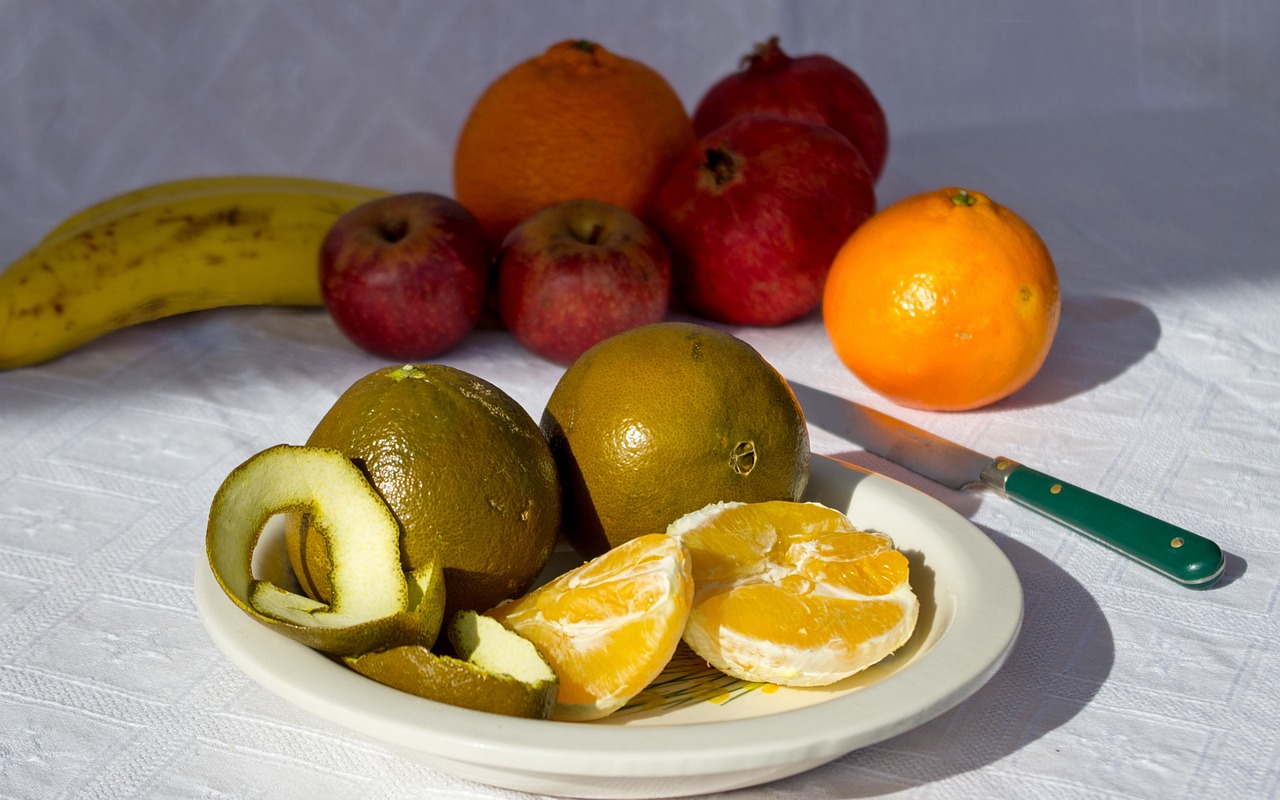Navel orange trees typically exhibit a moderate growth rate, averaging about 1 to 2 feet per year under optimal conditions. Factors such as soil quality, climate, and care practices significantly influence this growth rate in citrus orchards.
Navel Orange Trees: An Overview
Navel orange trees, known for their sweet and seedless fruit, are a popular choice in citrus orchards across the United States. Their attractive appearance and delicious produce make them favorable for both commercial growers and backyard gardeners. Understanding the growth rate of these trees is essential for effective orchard management and maximizing fruit yield.

The growth rate of navel orange trees can vary depending on several factors. These include environmental conditions, soil quality, irrigation practices, and overall tree care. Typically, navel orange trees reach their full height of around 15 to 30 feet within 10 to 15 years. However, their growth can be influenced significantly by the following factors:
Factors Affecting Growth Rate
- Soil Quality: Well-drained, nutrient-rich soil promotes healthy growth.
- Climate: Navel orange trees thrive in warm climates with adequate sunlight.
- Irrigation: Regular watering is crucial for maintaining optimal growth conditions.
- Pest and Disease Control: Effective management of pests and diseases can prevent stunted growth.
- Fertilization: Proper fertilization schedules enhance nutrient availability, promoting better growth.
In general, navel orange trees require a careful balance of these factors to achieve their potential growth rate. For example, trees planted in sandy loam with good drainage tend to grow faster compared to those in clayey or compacted soils. Furthermore, adequate sunlight is vital; these trees ideally need at least six to eight hours of direct sunlight daily.
Growth Phases of Navel Orange Trees
Navel orange trees undergo several distinct growth phases throughout their life cycle. Understanding these phases can help growers implement effective management strategies tailored to each stage. The main growth phases include:

- Germination and Seedling Stage: This initial phase lasts approximately 6 to 12 months, during which seeds sprout and develop into young seedlings.
- Juvenile Stage: Lasting about 2 to 3 years, this stage is characterized by rapid vegetative growth but little to no fruit production.
- Mature Stage: Beginning around year 4 or 5, trees enter the mature stage where they start producing fruit regularly.
- Full Production Stage: Generally reached between years 8 to 15, this phase sees peak fruit production and tree height stability.
The juvenile stage is crucial because it sets the foundation for future growth and fruit production. During this time, it is essential to provide proper care and nutrition to encourage robust development. Moreover, any issues such as pests or diseases should be addressed promptly to avoid long-term damage.
Growth Rate Comparison
When comparing the growth rates of navel orange trees to other citrus varieties, it is important to recognize that different species can exhibit varying patterns. Below is a table summarizing the average growth rates of several common citrus trees:
| Citrus Variety | Average Growth Rate (per year) |
|---|---|
| Navel Orange | 1 to 2 feet |
| Valencia Orange | 1 to 2 feet |
| Lemon Tree | 1 to 3 feet |
| Lime Tree | 1 to 2 feet |
| Mandarin Orange | 1 to 3 feet |
This comparison highlights that while navel oranges have a moderate growth rate, other varieties like lemon and mandarin trees may grow slightly faster under similar conditions. Understanding these differences can aid growers in selecting the right variety for their specific climate and soil conditions.

In summary, the navel orange tree’s growth rate is influenced by several interrelated factors. By closely monitoring these elements and understanding the tree’s growth phases, growers can optimize their orchard management practices for improved yield and tree health.
Optimal Conditions for Navel Orange Tree Growth
To achieve the best growth rates for navel orange trees, certain environmental conditions must be met. These conditions influence not only the tree’s growth but also its overall health and fruit production. Understanding and providing these optimal conditions can lead to a successful citrus orchard.
Soil Requirements
The soil in which navel orange trees are planted plays a critical role in their growth. Here are some essential soil characteristics to consider:
- Drainage: Good drainage is vital. Navel orange trees do not thrive in waterlogged soils, which can lead to root rot.
- Nutrient Content: The soil should be rich in organic matter and essential nutrients, particularly nitrogen, phosphorus, and potassium.
- Soil pH: A slightly acidic to neutral pH (between 6.0 and 7.5) is ideal for optimal nutrient absorption.
Conducting a soil test before planting can provide valuable insights into the nutrient content and pH of the soil. This information allows growers to amend the soil appropriately, ensuring the best possible conditions for tree establishment and growth.

Climate Preferences
Navel orange trees flourish in warm, subtropical to tropical climates. Understanding their climate preferences can help growers select suitable locations for planting. Key climatic factors include:
- Temperature: Ideal temperatures range from 60°F to 85°F. Trees can tolerate short periods of cold but are susceptible to frost damage.
- Sunlight: Navel oranges require full sun exposure for at least six to eight hours daily to ensure proper photosynthesis and fruit development.
- Humidity: While moderate humidity levels are beneficial, excessive humidity can lead to fungal diseases.
Irrigation Practices
Irrigation is a crucial factor in the growth of navel orange trees. Adequate water supply promotes healthy root development and overall tree vigor. Here are some irrigation practices to consider:
- Frequency: Watering should be done regularly, especially during dry spells. Young trees require more frequent watering until they establish strong roots.
- Method: Drip irrigation is recommended as it delivers water directly to the root zone, minimizing evaporation and reducing water waste.
- Soil Moisture Monitoring: Use moisture meters or simple methods like checking the soil’s top few inches to determine when to water. Avoid overwatering, which can be detrimental.
Pest and Disease Management
The health of navel orange trees can be compromised by various pests and diseases. Effective management practices are essential for maintaining tree vigor and maximizing growth rates.
Common Pests
Navel orange trees may attract several pests that can hinder growth. Some common pests include:
- Aphids: These small insects can cause leaf curling and yellowing by sucking sap from young shoots.
- Spider Mites: These pests thrive in dry conditions and can lead to stippling on leaves.
- Scale Insects: These pests attach themselves to branches and leaves, causing stress by drawing nutrients from the tree.
Disease Management
Diseases such as citrus greening (Huanglongbing) and root rot can severely affect navel orange trees. Growers should take preventive measures, including:
- Regular Inspections: Frequently check trees for signs of disease or pest infestations.
- Cultural Practices: Implement proper sanitation by removing fallen fruit and debris that can harbor pests or diseases.
- Pesticide Use: Apply organic or chemical pesticides judiciously according to local regulations and recommendations from agricultural experts.
Nutritional Needs of Navel Orange Trees
Fertilization is key to promoting healthy growth and fruit production in navel orange trees. Understanding their nutritional needs helps ensure optimal health throughout their life cycle.
Nutrient Requirements
Navel orange trees benefit from a balanced supply of essential nutrients. Here are the primary nutrients required:
- Nitrogen (N): Essential for vegetative growth, nitrogen should be applied during the growing season.
- Phosphorus (P): Supports root development and flowering; it is particularly important during the early years of growth.
- Potassium (K): Enhances fruit quality and resistance to disease; regular potassium applications are critical as trees mature.
A soil test can help determine existing nutrient levels, guiding appropriate fertilizer application rates. It is often beneficial to use fertilizers specifically formulated for citrus trees to meet their unique nutritional requirements.
The combination of optimal environmental conditions, effective pest control, and balanced nutrition will significantly enhance the growth rate of navel orange trees in citrus orchards, setting the stage for a productive harvest.
Pruning Techniques for Navel Orange Trees
Pruning is a vital cultural practice that promotes the healthy growth and productivity of navel orange trees. Proper pruning can help improve air circulation, light penetration, and overall tree structure. Understanding how and when to prune can significantly enhance tree performance in citrus orchards.
When to Prune
The timing of pruning is critical to ensure minimal disruption to the tree’s growth. The best time to prune navel orange trees is typically in late winter or early spring before the new growth begins. This timing allows the tree to heal quickly and encourages robust new growth after the pruning process.
- Late Winter: Pruning during this period helps shape the tree and remove any dead or damaged branches.
- Spring: As new growth starts, light pruning can be performed to enhance fruit production and maintain tree health.
Types of Pruning
There are several types of pruning techniques that can be employed to maintain navel orange trees effectively:
- Formative Pruning: This involves shaping young trees to establish a strong structure that supports fruit production. Aim for an open center to allow light and air to penetrate.
- Maintenance Pruning: Regularly scheduled pruning helps remove dead, diseased, or crossing branches, promoting better airflow and reducing disease risk.
- Fruit Thinning: Removing excess fruit from branches can improve the size and quality of remaining fruit. This practice also helps prevent branch breakage due to heavy fruit loads.
Harvesting Navel Oranges
Harvesting is a crucial stage in the lifecycle of navel orange trees, influencing both the quality and quantity of the yield. Understanding the proper harvesting techniques can help ensure that the fruit remains fresh and flavorful.
Optimal Harvest Time
Navel oranges typically reach maturity in late fall to early spring, depending on the climate and specific variety. It is essential to harvest at the right time to ensure peak flavor and sweetness. Signs that navel oranges are ready for harvest include:
- Color: The skin should be a vibrant orange color, indicating ripeness.
- Firmness: Mature oranges should feel firm when gently squeezed.
- Taste Test: Sampling a few fruits can provide a good indication of overall sweetness and quality.
Harvesting Techniques
To prevent damage to both the fruit and the tree, proper harvesting techniques should be followed:
- Hand Harvesting: Use clippers or scissors to cut the fruit from the tree, leaving a small piece of stem attached to avoid bruising.
- Avoiding Damage: Handle the fruit gently to minimize bruises or cuts that can lead to spoilage.
- Timing: Harvest during dry conditions to reduce moisture on the fruit, which can promote mold growth during storage.
Pest Management Strategies for Navel Orange Trees
Effective pest management is essential for sustaining the growth rate and health of navel orange trees. Implementing integrated pest management (IPM) strategies can help minimize damage while being environmentally responsible.
Monitoring and Identification
The first step in pest management is monitoring the orchard for signs of pest activity. Regular inspections can help identify issues before they escalate:
- Visual Inspections: Check leaves, stems, and fruit for signs of pests or damage.
- Pest Traps: Utilize sticky traps or pheromone traps to monitor pest populations effectively.
Pest Control Methods
Once pests are identified, various control methods can be applied:
- Cultural Controls: Maintain healthy trees through proper watering, fertilization, and pruning practices to enhance their resilience against pests.
- Biological Controls: Introduce beneficial insects, such as ladybugs or lacewings, that prey on harmful pests.
- Chemical Controls: When necessary, apply pesticides as a last resort. Choose products specifically designed for citrus trees and follow all safety guidelines.
The Role of Weather in Navel Orange Tree Growth
The weather plays a significant role in the growth and health of navel orange trees. Understanding its impact can help growers make informed decisions about care and management practices throughout the year.
Temperature Fluctuations
Navel orange trees thrive in warm temperatures but are sensitive to extreme conditions. Cold snaps can cause damage, while excessive heat may stress the trees. Here are some considerations:
- Frost Protection: Implement frost protection measures, such as using frost cloths or wind machines, during cold spells.
- Heat Stress Management: Provide adequate irrigation during heat waves to prevent dehydration and stress on the trees.
Rainfall and Humidity
The amount of rainfall and humidity levels can also impact navel orange tree growth:
- Irrigation Adjustments: In areas with low rainfall, ensure consistent irrigation during dry spells.
- Disease Risk: High humidity can increase disease risks. Proper spacing and pruning can improve airflow and reduce humidity around the leaves.
By understanding these environmental factors and implementing appropriate management strategies, growers can optimize the growth rates of their navel orange trees while ensuring a healthy and productive orchard environment.
Future Trends in Navel Orange Tree Cultivation
The cultivation of navel orange trees is evolving with advancements in agricultural practices and technology. Growers are increasingly adopting innovative strategies to enhance growth rates, improve fruit quality, and boost overall productivity. Here are some future trends that may shape the future of navel orange tree cultivation:
Sustainable Practices
As environmental concerns grow, the adoption of sustainable practices in citrus orchards has become more prominent. These practices include:
- Organic Farming: More growers are shifting towards organic methods, using natural fertilizers and pest control solutions to minimize chemical usage.
- Water Conservation: Implementing drip irrigation and rainwater harvesting systems to optimize water use and reduce waste.
- Soil Health Management: Focusing on soil health through cover cropping and reduced tillage practices to enhance soil biodiversity and fertility.
Technological Innovations
Technology plays a crucial role in modern agriculture, including the cultivation of navel orange trees. Innovations that are shaping the industry include:
- Precision Agriculture: Utilizing drones and satellite imagery to monitor crop health, assess irrigation needs, and identify pest infestations early.
- Automated Irrigation Systems: Smart irrigation systems that use sensors to determine soil moisture levels and automate watering schedules help ensure optimal water application.
- Genetic Research: Advances in genetic research may lead to the development of navel orange varieties that are more resistant to diseases and pests while maintaining high-quality fruit production.
Consumer Preferences and Market Trends
Understanding consumer preferences is crucial for growers. As awareness about health and nutrition grows, consumers are increasingly seeking fruits that are organic or locally sourced. This shift presents an opportunity for growers to adapt their practices to meet these demands:
- Organic Certifications: Obtaining organic certifications can enhance marketability and attract health-conscious consumers.
- Local Markets: Focusing on direct-to-consumer sales through local farmers’ markets or community-supported agriculture (CSA) programs can increase profitability.
Final Thoughts
The growth rate of navel orange trees in citrus orchards is influenced by various factors, including environmental conditions, soil quality, irrigation practices, and pest management strategies. By understanding these aspects, growers can optimize conditions for their trees, leading to healthier plants and higher fruit yields.
As the industry continues to evolve, embracing sustainable practices and technological advancements will be essential for maintaining productivity while meeting consumer demands. With a focus on innovation, growers can ensure the viability of navel orange production for years to come.
In conclusion, successful cultivation of navel orange trees requires a holistic approach that combines good agricultural practices with an awareness of market trends and environmental stewardship. By adopting these strategies, growers can not only enhance growth rates but also contribute positively to the sustainability of citrus farming.
Ultimately, the journey of nurturing navel orange trees from planting through harvest is a rewarding endeavor that brings both economic benefits and the joy of contributing to food production. As growers continue to adapt and innovate, the future of navel orange cultivation looks bright.
